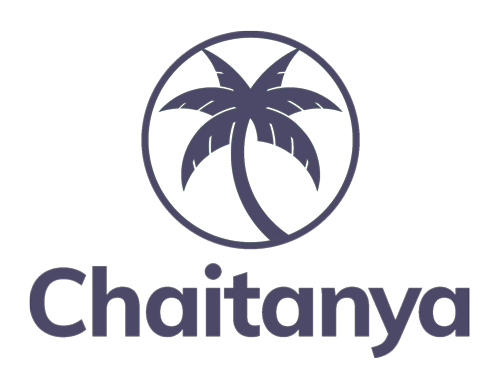April 25, 2023
Introduction
Poverty remains a significant economic issue in many developing countries, including India. Here agriculture is the main source of income for rural areas. However, despite employing 42.6% of the workforce in 2019, access to official financial institutions has been limited for these communities, leading to poor performance. To address this issue, Microfinance Institutions (MFIs) have emerged as a viable solution to raise household income and lower poverty levels among the poorest individuals. Despite some challenges, MFIs continue to focus on providing financial inclusion to the most vulnerable populations in India’s rural areas. While microfinance has proven effective in addressing poverty levels among vulnerable populations in India’s rural areas, ongoing efforts are needed to ensure its long-term sustainability and success. In this blog post, we will delve into the advantages and obstacles of microfinance in rural regions.
What are Microfinance Institutions?
In the realm of financial inclusion in developing countries, microfinance has emerged as a potent tool, especially in rural areas where traditional banking services are scarce. Microfinance institutions (MFIs) provide small loans, savings, and insurance services to low-income individuals that assist them in starting small businesses and enhancing their standard of living. So, microfinance holds immense promise as a means of financial inclusion for rural communities.
Benefits of Microfinance in Rural Areas
Microfinance has numerous benefits in rural areas that contribute to economic and social development:
- Economic Empowerment
One of the most significant advantages is economic empowerment, which allows low-income individuals to become entrepreneurs and manage their finances effectively. Microfinance institutions (MFIs) provide small loans that enable people to start or expand small businesses, generating income and employment opportunities in their communities.
- Financial Inclusion
Another advantage of microfinance is financial inclusion, which provides financial services to those who are typically excluded from formal banking systems. By offering loans, savings, and insurance services, MFIs enable individuals to build assets and manage financial risks. This contributes significantly to poverty reduction efforts.
- Women Empowerment
Microfinance has also been a powerful tool for women’s empowerment. In many societies, women are often excluded from economic activities and denied access to formal financial services. However, MFIs target women as their primary clients by providing them with the resources and support needed for starting small businesses and becoming financially independent.
- Social Development
Moreover, microfinance promotes social development by increasing access to basic services such as education, health care, and clean water. With increased income from microloans provided by MFIs, individuals can afford these necessities while improving their standard of living.
- Self-Sustainability
Finally, the self-sustainability model of MFIs ensures that microfinance remains a sustainable solution for financial inclusion in rural areas. These institutions generate enough revenue to cover operational costs while remaining financially viable in the long run.
So, microfinance promotes self-sustainability among communities through an inclusive approach to finance management.
Challenges of Microfinance in Rural Areas
Microfinance is a crucial tool for providing financial services to low-income individuals in rural areas. While MFIs have shown a median return on equity of 8.1% in 2016, their financial viability remains a concern due to high operational expenditures resulting from costly credit risk management systems and small loan portfolios. Yet, overindebtedness among borrowers is a common problem faced by microfinance institutions. This is because borrowers frequently seek funds from various sources due to their constant need for money. Several challenges:
- Lack of Infrastructure
One major challenge is the lack of basic infrastructure in many rural areas, such as roads, electricity, and internet connectivity. This poses a significant obstacle for microfinance institutions (MFIs) looking to reach remote areas and provide much-needed financial services.
- Limited Financial Literacy
Another challenge is the limited financial literacy of many low-income individuals in rural areas. Without a solid understanding of loan terms and effective financial management skills, it can be difficult for borrowers to make informed decisions about borrowing money. MFIs must provide financial education to their clients to ensure they understand the risks and benefits of taking out loans.
- High Operational Costs
In addition, operating in rural areas can be expensive due to high transportation costs and the lack of infrastructure. This presents a significant operational cost challenge for MFIs who must keep their costs low while still providing affordable services.
- Limited Collateral
Furthermore, collateral requirements pose another obstacle for low-income individuals in rural areas who often lack assets that can be used as collateral. To mitigate this risk, MFIs must develop innovative solutions to assess creditworthiness without relying on traditional collateral-based lending.
- Limited Regulatory Framework
Finally, regulatory oversight for microfinance institutions is still evolving in many countries which poses regulatory challenges for MFIs operating in these regions. Lack of oversight can also lead to unethical practices by some microfinance institutions that may harm borrowers’ interests.
Overall, addressing these challenges will require innovative solutions from both MFIs and policymakers. And, we also need to make Microfinance programs succeed in helping those who need it most.
Conclusion
While microfinance has been successful in various aspects, it also confronts several challenges. Overcoming these above-mentioned challenges requires innovative solutions that involve collaboration between stakeholders so that microfinance can continue being a viable solution for promoting financial inclusion in rural areas without any setbacks or obstacles impeding its progress.

